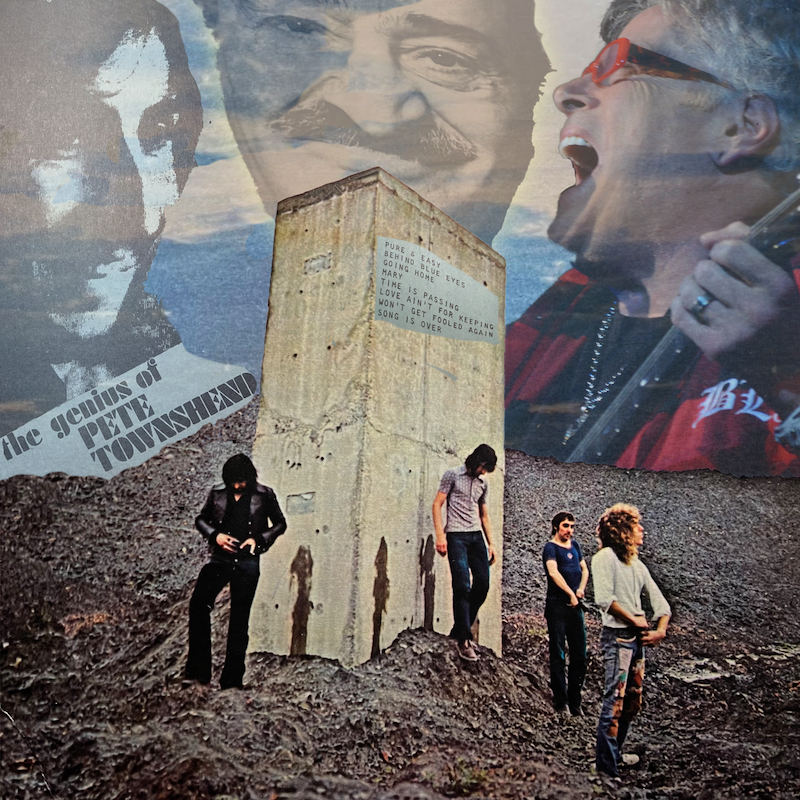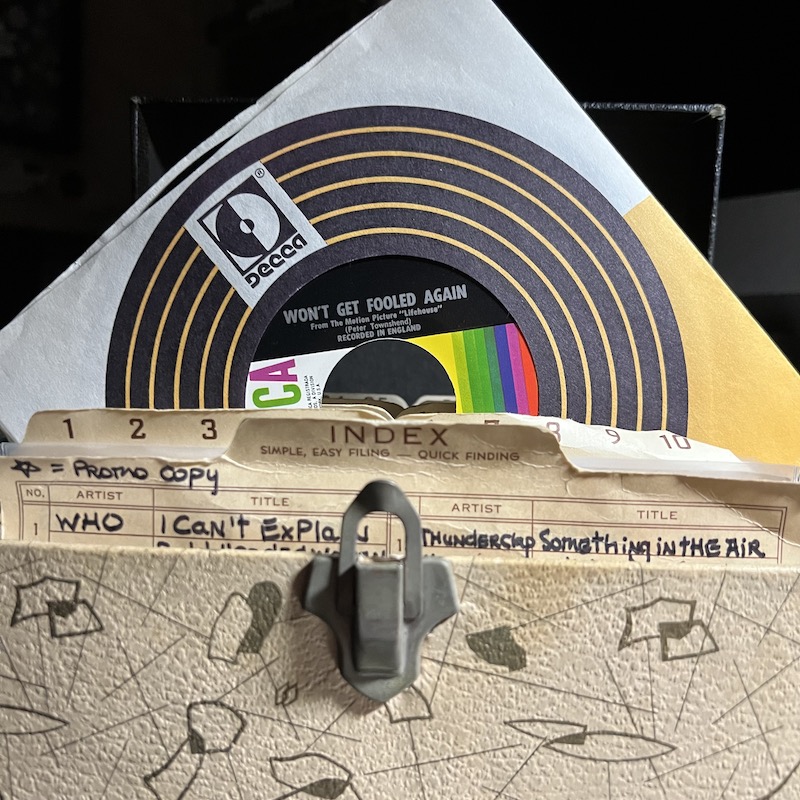
52 years ago today, what is now considered a milestone album in the history of rock music, Who’s Next was released. With a massive Super Deluxe Edition of early 70s Who music looming I had cause to reminisce about my personal attachment to the Who‘s Next album and the uncompleted project called Lifehouse that spawned it.
Go West Young Man…
The first time I heard any music connected with The Who’s now classic Who’s Next album was either in late July or early August 1971.
I remember sitting on my neighbors’ stoop in Brooklyn, New York talking with a few friends. A transistor radio was a ubiquitous companion at these hangouts. Through the conversation, a pulsating electronic sound eventually caught my ear. It was the percolating rhythm of “Won’t Get Fooled Again” generated by the ARP synthesizer driven arpeggios of Pete Townshend‘s Lowrey organ. I was immediately hooked.
In pre-Shazam days researching a song was limited by the whim of the radio DJ and the luck of timing. Based on a tell-tale guitar lick, I decided that this was new music from one of my favorite bands, Mountain. To my surprise, I came to learn that the song was part of a soon to be released new album from another one of my favorite bands, The Who.
I had spent the better part of the previous year listening to and proselytizing about the power of The Who’s Live at Leeds album. Consequently I took quite a chiding from my friends when I failed to identify them. Even so, I was thrilled that there would be new Who music to experience.

Though Pete Townshend’s appropriation of a few Leslie West licks seemed obvious to me at the time, I eventually forgot about it and just enjoyed the new tunes.
A year or so later Cream magazine ran a short interview with West that vindicated me for my first impressions. West talked about how exciting it was jamming with The Who during spring 1971 sessions at New York City’s Record Plant studio.
According to West in later interviews he had been contacted by The Who’s manager Kit Lambert. He told Leslie that Townshend wanted to enlist him as lead player for the recordings so that tracks could be captured with a live feel and a minimum need for overdubbing.
Surviving March 1971 session tapes reveal West added his tone monster sound to takes of “Baby Don’t You Do It,” “Won’t Get Fooled Again,” and a very electric version of “Love Ain’t For Keeping.”
Although Leslie West does not appear on the original release of Who’s Next, it is undeniable that the spirit of his playing, as channeled through Townshend, is part of the DNA of the album. The double stop bends that punctuate many of the songs and the squall that is unleashed as “Behind Blue Eyes” moves from pastoral tranquility to raging exclamation point, all speak to his influence.
I’m A One Man Band…
Who’s Next was released during my formative guitar learning period. I was not a “natural.” I loved playing but knew I was unlikely to match the nimble lead work of my favorite guitarists, Jimmy Page, Carlos Santana, and Eric Clapton. So the chord driven style of The Who and their attention to song-craft became my benchmark. I would endeavor to write tunes with memorable riffs, using big blocks chords and interesting rhythms. I bought myself a used Gibson SG because Pete played one.
In several print interviews of the time Townshend explained that he created demonstration versions of his songs in his home studio and presented them to the band as blueprints for potential Who recordings. The concept wasn’t new to me. After all, Paul McCartney had played just about everything on his first solo album released the year before.
An opportunity to hear those demos of Who’s Next material turned up in the form of an “underground” LP titled The Genius of Pete Townshend. It was offered by a label called Trademark of Quality. Did it seem sketchy? Yes. I ordered it immediately.

I remember returning home from school one afternoon to find the package had been delivered. Even listening today I can feel a rush of excitement as the first track “Pure and Easy” is heralded by dry drum cracks. “Pure and Easy” is a pivotal song in Townshend’s Lifehouse concept that had been left off of Who’s Next.
Lifehouse endeavored to follow the hugely popular Tommy rock opera with a film that would interweave eco-consciousness, audience participation, science fiction narrative, and Sufi transcendence.
The lyrics of “Pure and Easy” outlined the whole story of a polluted future where the “chords of life lose their joy” and the promise of the single musical note that liberates those open to experiencing it. This was as close to secret knowledge as a burgeoning songsmith (me) was likely to get.
SkeletonPete Says…
So, whose nexus? Mine for sure. A chance connection with The Genius of Pete Townshend album sent me on a lifelong path of home recording experimentation and validated my songwriting as a creative outlet. I’m still exploring a half century later.
